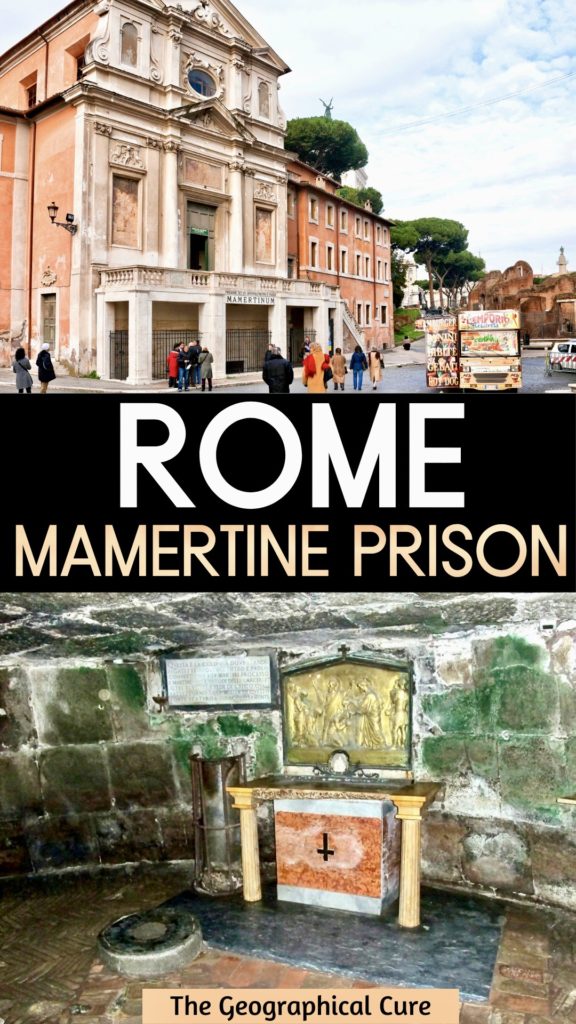Mamertine Prison is a place inextricably liked to pagan Rome’s quest for empire.
The prison is located in an evocative corner of Rome, at the foot of Capitoline Hill and opposite the Arch of Septimius Severus. It’s underneath the humble Church of San Giuseppi dei Falegnami.
While prisons weren’t a common feature in classical Rome, this ancient lock up has survived down the ages. Legend holds that the Bible’s most hallowed saints, Peter and Paul, were imprisoned there before their executions.
When you walk through the doors and descend to the prison, you’re stepping back thousands of years in time.
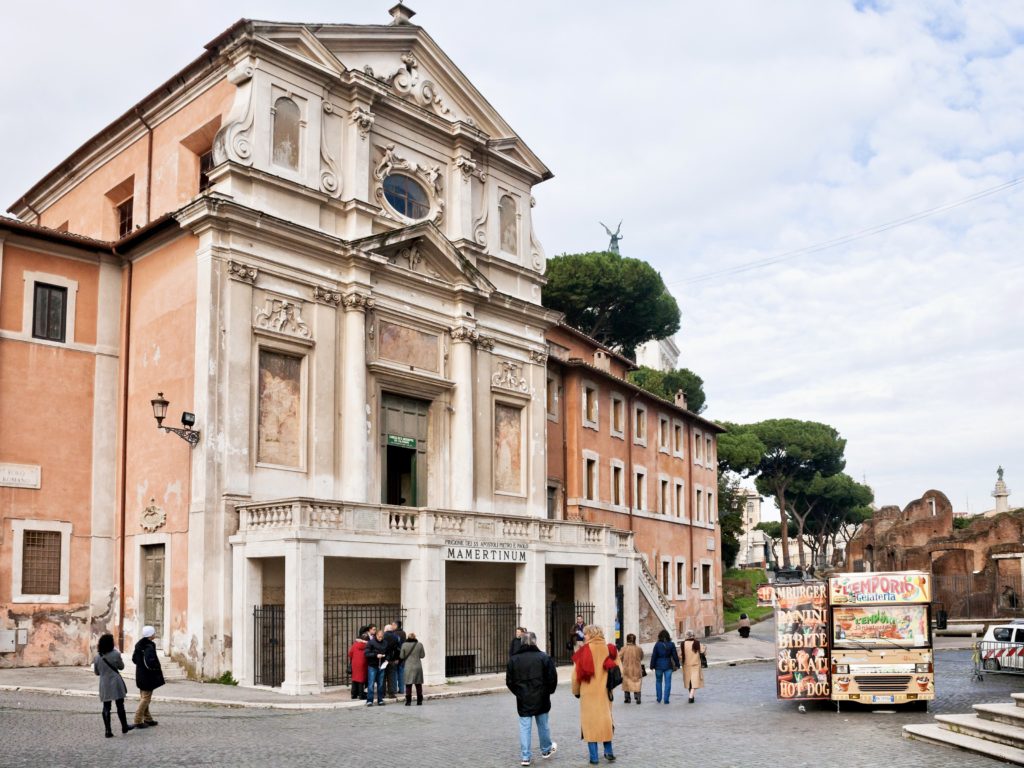
Mini History Of The Marmertine Prison
Ancient Rome was defined by strife and conflict. Romans fought for political power. Rome fought with other cities in its quest for expansion.
Patricians and plebeians fought each other to assert their rights. Patricians ran everything — the military, the government, and the economy. The working class plebeians grew tired of them holding the reigns of power and rebelled.
In 449 B.C., Rome adopted the Twelve Tablets, which contained explicit rules governing the conduct of Roman citizens. They were one of the most sophisticated laws of the ancient world. They even provided a right to trial by jury.
But, for a society so enamored with laws, the concept of imprisonment was foreign to it. If someone broke a law, that person was exiled or executed, not kept confined at the expense of the state.
READ: Nutshell History of Ancient Rome
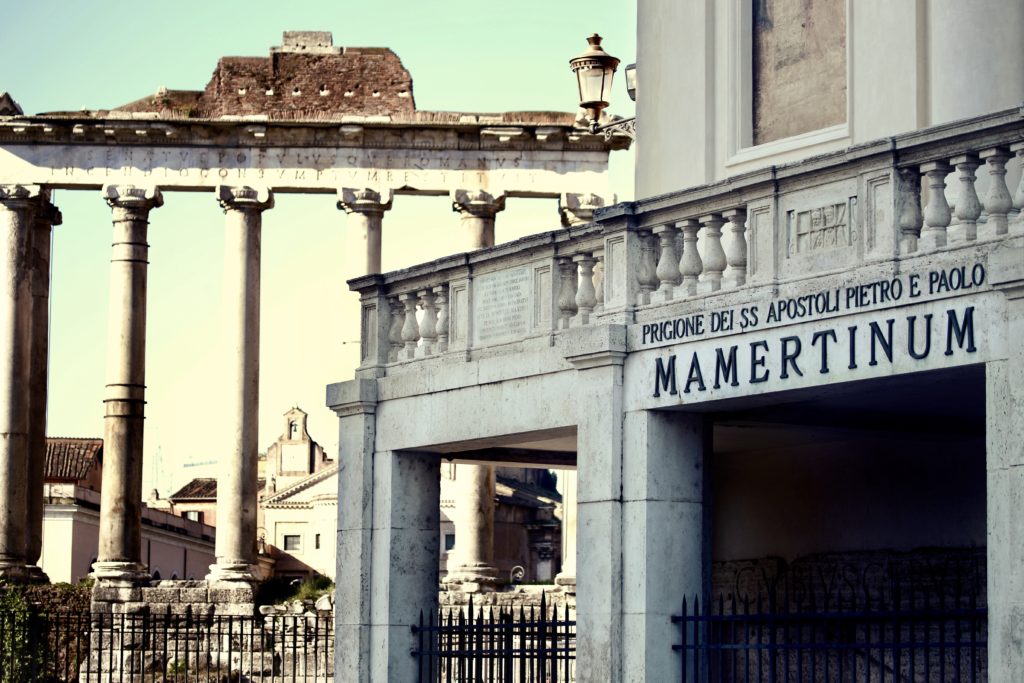
And yet there was a need for some type of prison to store miscreants or political dissidents, even if only temporarily. Legal cases weren’t always quickly decided. A victorious general would need to hold foreign captives until he had his triumph.
The Mamertine Prison was thus created to temporarily house offenders and enemies of the state. (The practice of confining prisoners for longer periods as a form of punishment wasn’t widespread until the 15th century.)
In Roman society, if your life was forfeit, so was your property. The state took possession, enriched by its victims.
Naturally, this led to innocent people being imprisoned on trumped up charges just because someone coveted their property.
The first mention of the Mamertine Prison is by Roman historian Livy, who dates its construction to the 7th century B.C.
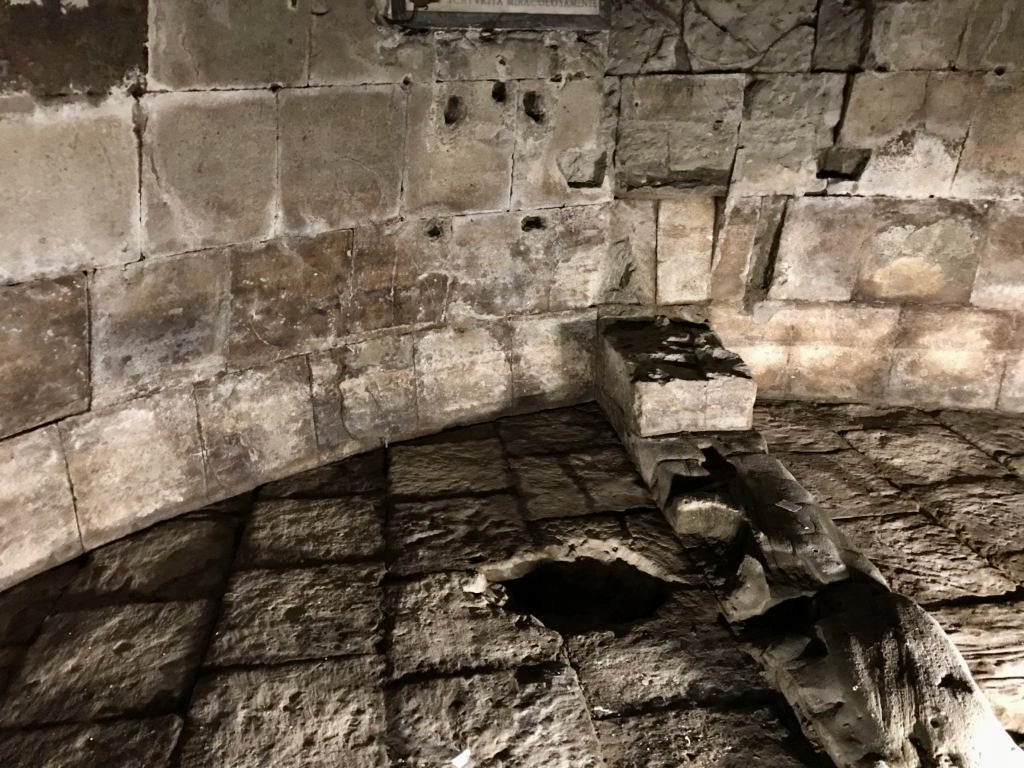
Ancus Marcius, the fourth king of Rome, likely built the subterranean dungeon during his reign from 640-616 B.C.
Back then, it was known as the Carcer Tullianum, perhaps named after one of the Roman kings from that time.
The prison wasn’t really a prison. It was a place of maximum security banishment until death.
Prisoners were plunged through a round hole in the ground by means of a rope. Some were simply allowed to starve to death awaiting their trial or execution.
The ancient historian Sallust said it was 12 feet underground and described it as “disgusting and vile by reason of the filth, the darkness and the stench.”
But not all of the victims of this terrible and complicated place are lost to history.

Legend holds that Saints Peter and Paul were held in Mamertine before their executions. In the Bible, Peter references his imprisonment.
They were seized during the Christian persecutions following the Great Fire of Rome in 64 A.D. Emperor Nero blamed the fire on Christians to deflect blame away from himself.
According to legend, Peter magically drew a spring of water so that he could baptize visitors and prison guards. These were the first baptisms in the history of Christianity.
As a Roman citizen, Paul was entitled to a beheading. Peter was a non-citizen and thus subjected to crucifixion.
After the fall of Rome, Mamertine Prison was a shrine for the cult-like worship of St. Peter. By the 8th century, it was being used as a church. In the 16th century, the Church of San Giuseppe dei Falegnami was built on top of the prison.
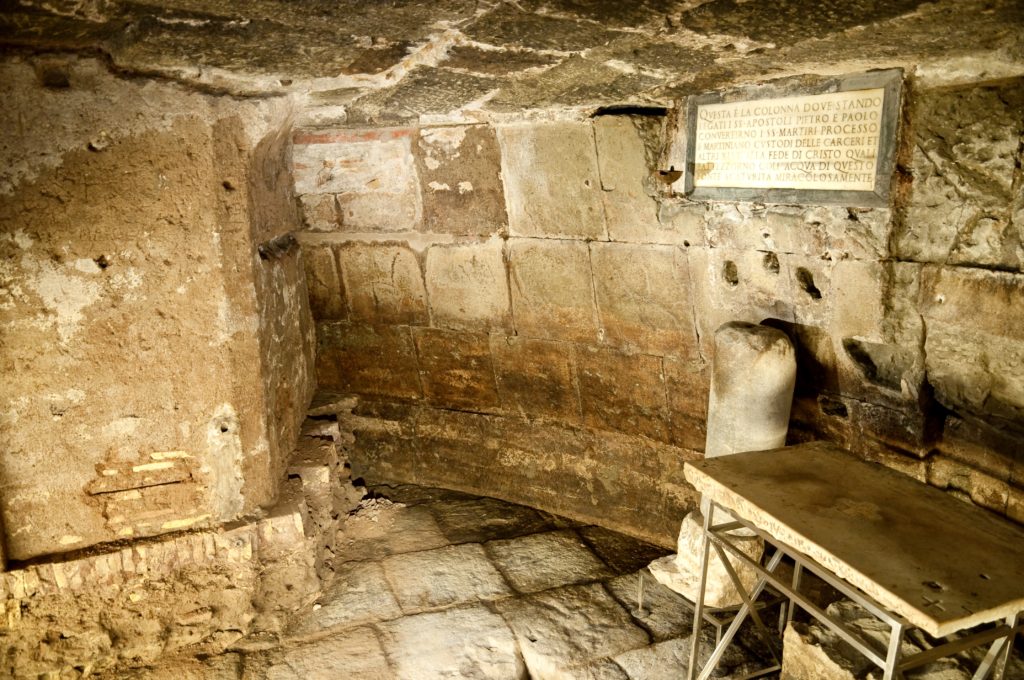
What To See In Mamertine Prison
There’s not much to see inside really. It’s more about the atmospherics.
On the first level, which dates from the 2nd century B.C., there’s a stone altar commemorating the two saints.
There are traces of medieval frescos commemorating the two founders of the Christian church.
One plaque displays the names of the most famous prisoners, including Vercingetorix, leader of the Gauls, and Jugurtha, King of Numidia. Another lists the saints and martyrs imprisoned there and their persecutors.
When you descend to the lower level via a staircase, look up and you can see a grated drain cover. This was the hole where prisoners were lowered by rope into the ancient cistern.
You’ll walk into a circular underground cell that’s 30 x 22 feet. This was the cell of Saints Peter and Paul. The only illumination is the hole in the ceiling.
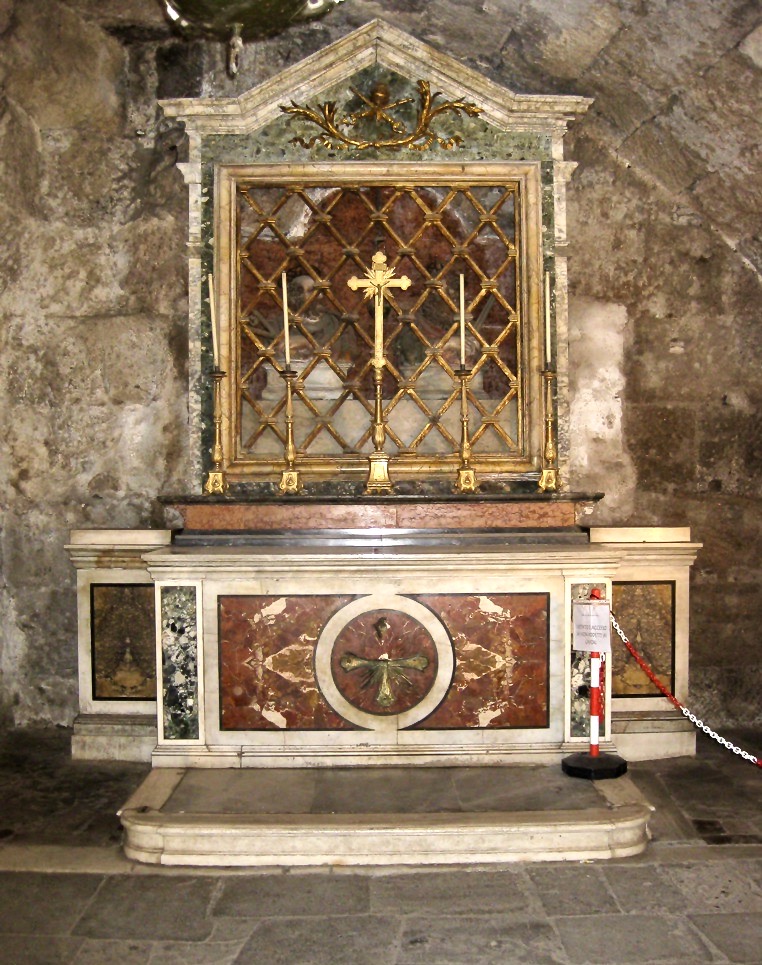
You may feel claustrophobic, as the prisoners likely did. You can almost feel their suffering.
There’s a small altar with an upside down cross, because St. Peter was crucified upside down. A bronze relief above it shows St. Peter baptizing his followers.
There’s also the ruins of the column where St. Peter and St. Paul were tied when they converted two prison guards to Christianity.
To be in the prison is not just to be among the dead. It’s to be present at the early dawning of a religion, which grew to count one in three people on earth as a believer.
It’s a place to gain insight into the foundation of Roman law. Justice, 3,000 years ago, meant something quite different than it does today. For all of Rome’s lofty ideals, it had a rather callous indifference to human life.
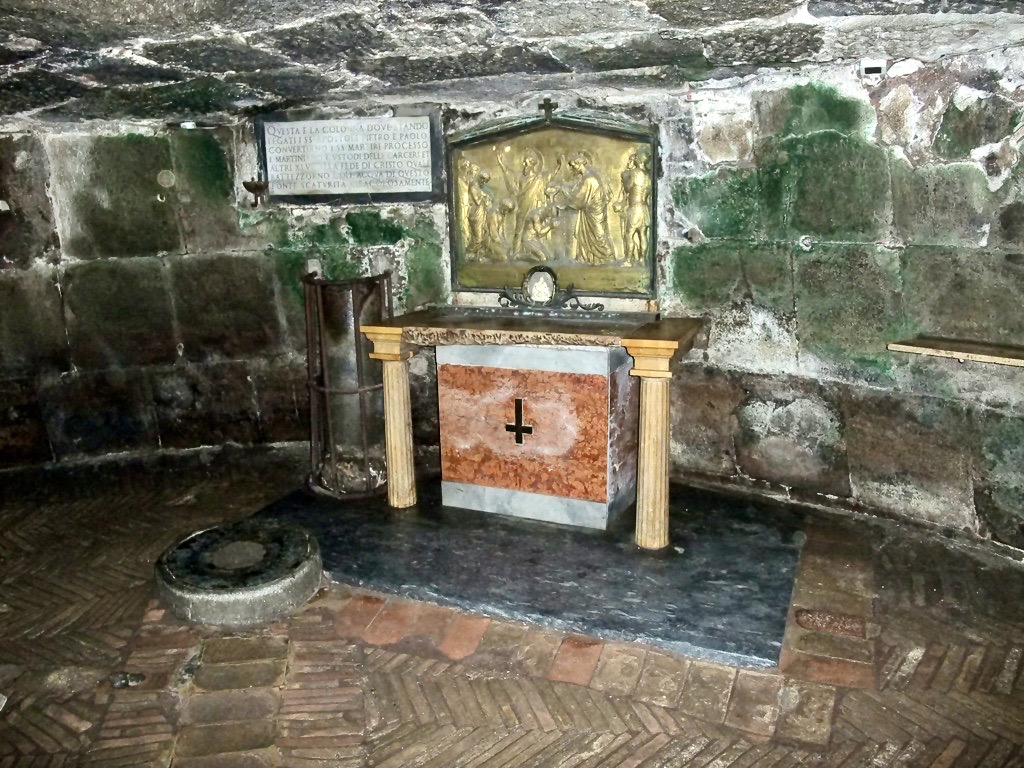
Tips For Visiting Mamertine Prison
1. Address:
Clivo Argentario, 1. You use the side entrance. The prison is a 12 minute walk from the Colosseum.
2. Hours:
8:30 am to 6:30 pm from the end of March to the end of October. Closing at 4:30 pm other months.
3. Entry fee:
€ 10. You can prebook an entry ticket online here. Admission is free if you have the OMNIA Rome and Vatican Pass.
4. Is Mamertine Prison Worth Visiting?
Is the Mamertine Prison worth visiting? The price may seem rather steep for what you see.
It’s a small but ancient and thought provoking place. It will appeal most to history buffs, archaeology buffs, and religious pilgrims who want to stand in the same cell as the apostles.
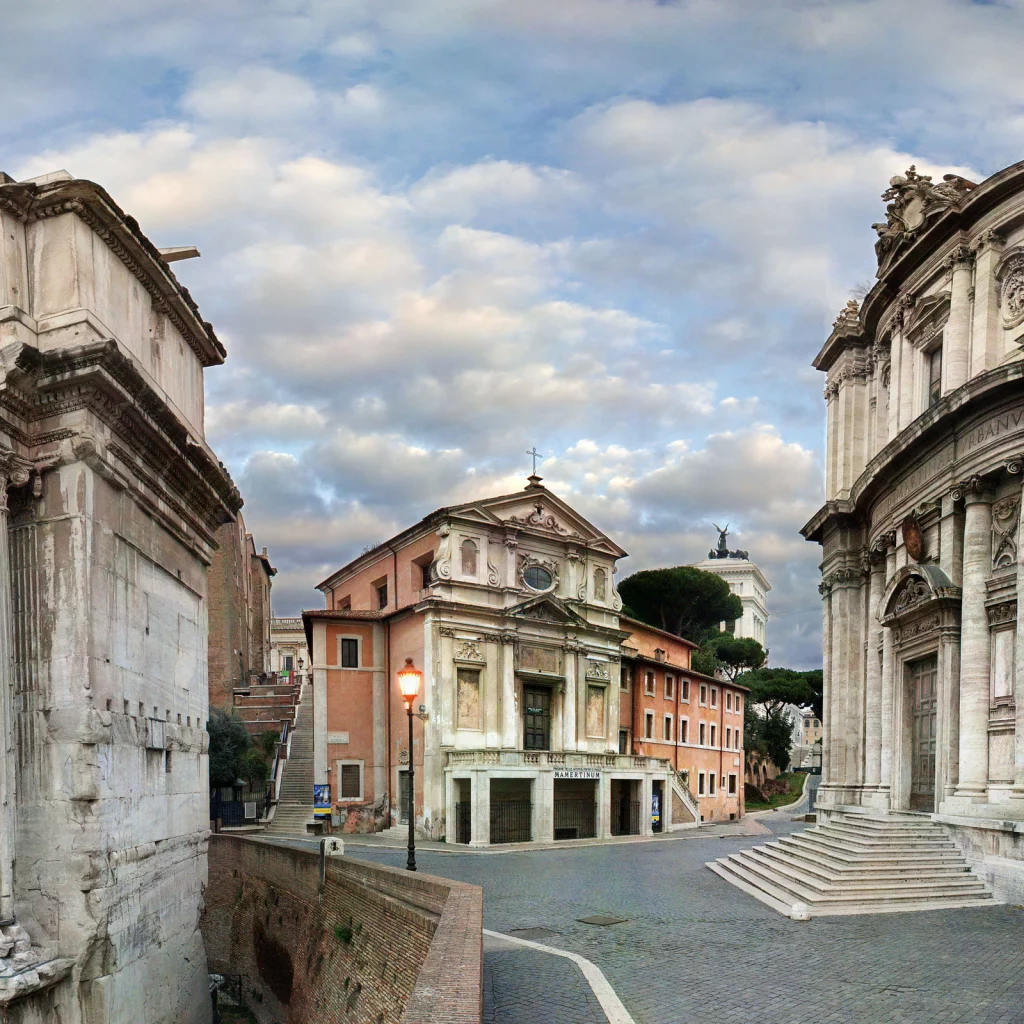
I visited purely for the historic and archaeological value. There aren’t many monuments that date from the Roman Republic.
It’s a short visit. You won’t need more than 30 minutes.
5. Guided Tour:
If you want to learn about the life of St. Paul, you can also book a guided tour that includes both Mamertine Prison and the Colosseum.
I hope you’ve enjoyed my guide to Mamartine Prison. You may enjoy these other Rome travel guides and resources:
- 8 ways to spend 1 day in Rome
- 3 day itinerary for Rome
- 5 day itinerary for Rome
- 1 day itinerary for Vatican City
- Hidden gems in Rome
- Best museums in Rome
- Guide to the Borghese Gallery
- Guide to Palatine Hill
- Guide to the Roman Forum
- Guide to the Colosseum
- Walking tour of central Rome
If you’d like to visit Mamartine Prison, pin it for later.

